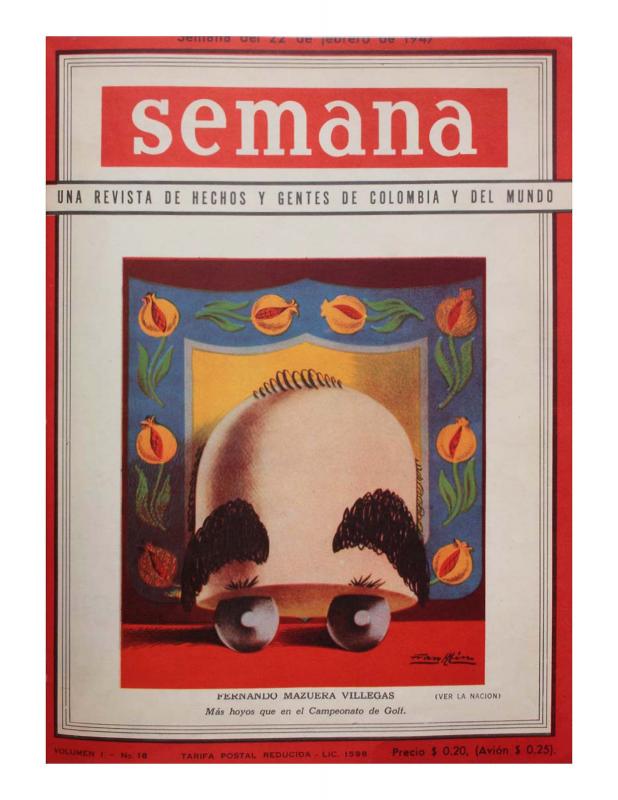The purpose of this article, written 20 years after the death of the Colombian artist Santiago Martínez Delgado (1906–54), was to remember the work of an artist who executed highly acclaimed murals in the 1940s and 1950s. He is an artist about whom little is known and little research has been done, apart from the biography to which the writer of this article refers, written by the historian Joaquín Piñeros Corpas (1915−82). This edition of the biography was sponsored by the Compañía Colombiana de Seguros. In 1935, this company had established the journal Vida, a periodical cultural publication for which Martínez Delgado was the art director, draftsman, designer and editor.
The artist’s murals, pointed out by Orduz in his article as having the richest chromatic range of any murals in Colombia, are represented in the commissions awarded to him by private corporations, the government and the Church. Examples are the Triptych about the Congress of Cúcuta of 1821 for the Elliptical Hall in the National Capitol [see “Arte: El Mural del Capitolio,” doc. no. 1134910], the frescoes at the Banco Comercial Antioqueño in Medellín, the murals at the Colegio de la Presentación in Bogotá, and the oil paintings executed for the stations of the cross in the Catedral de Cúcuta (unfinished work). The artist’s oil painting Vegetación Colombiana was rendered under commission to the First National City Bank and donated to the Ministry of the Interior and Justice in 2004. This painting was considered the largest work on canvas in Colombia (8m wide x 4m high). Moreover, the article goes on to highlight the artists multiple talents, referring to his decorative work as well as his cinematography and his work in radio. Orduz also mentions his advertising venture, in which he established his own company, the Empresa de Publicidad Santiago Martínez Delgado y Cia. Ltda. However, the writer believes that he cannot truly be called an “advertising executive” since the company he called upon to sponsor his best-known script for radio drama, El derecho de nacer, saw no increase in sales as a result of its sponsorship.
Although he died suddenly when he was not yet 50, Martínez Delgado had already received various medals. They included the gold medal for the oil painting El que volvió—in which he illustrated the problem of internal migration of peasants into the city—at the Salón Anual de Artistas Colombianos in 1940. He also won first prize in painting at the next round of the same competition, the following year, with the oil painting Interludio. Earlier, he had already received the Logan Prize for the mural La evolución cultural de Colombia in 1933, executed for the Chicago Expo that took place the same year. Although much of his work features themes taken from Colombian history, literature and landscapes, it has not been the subject of much research. This omission or oblivion can perhaps be attributed to his premature death, added to the fact that his work was maturing just when Modern art was beginning to emerge in Colombia. These Modern approaches were far from the artist’s “Baroque aesthetics,” mentioned by Orduz. Furthermore, at that time, Colombian art critics were adopting a Modernist view of art history [see “Una mirada a los orígenes del campo de la crítica de arte en Colombia,” doc. no. 1094156]. All these factors at least partially explain the unawareness of the work of Santiago Martínez Delgado that prevails today.


